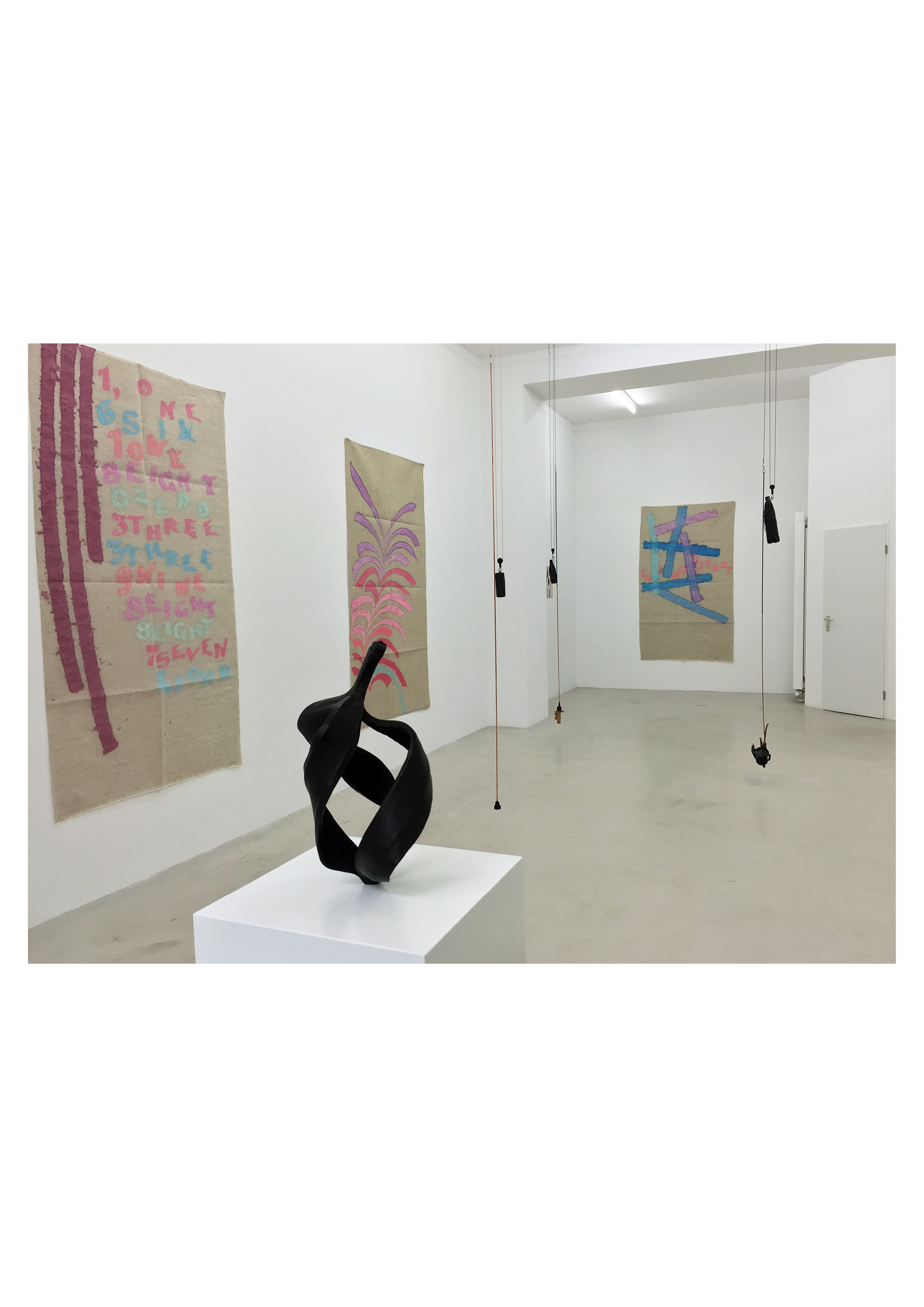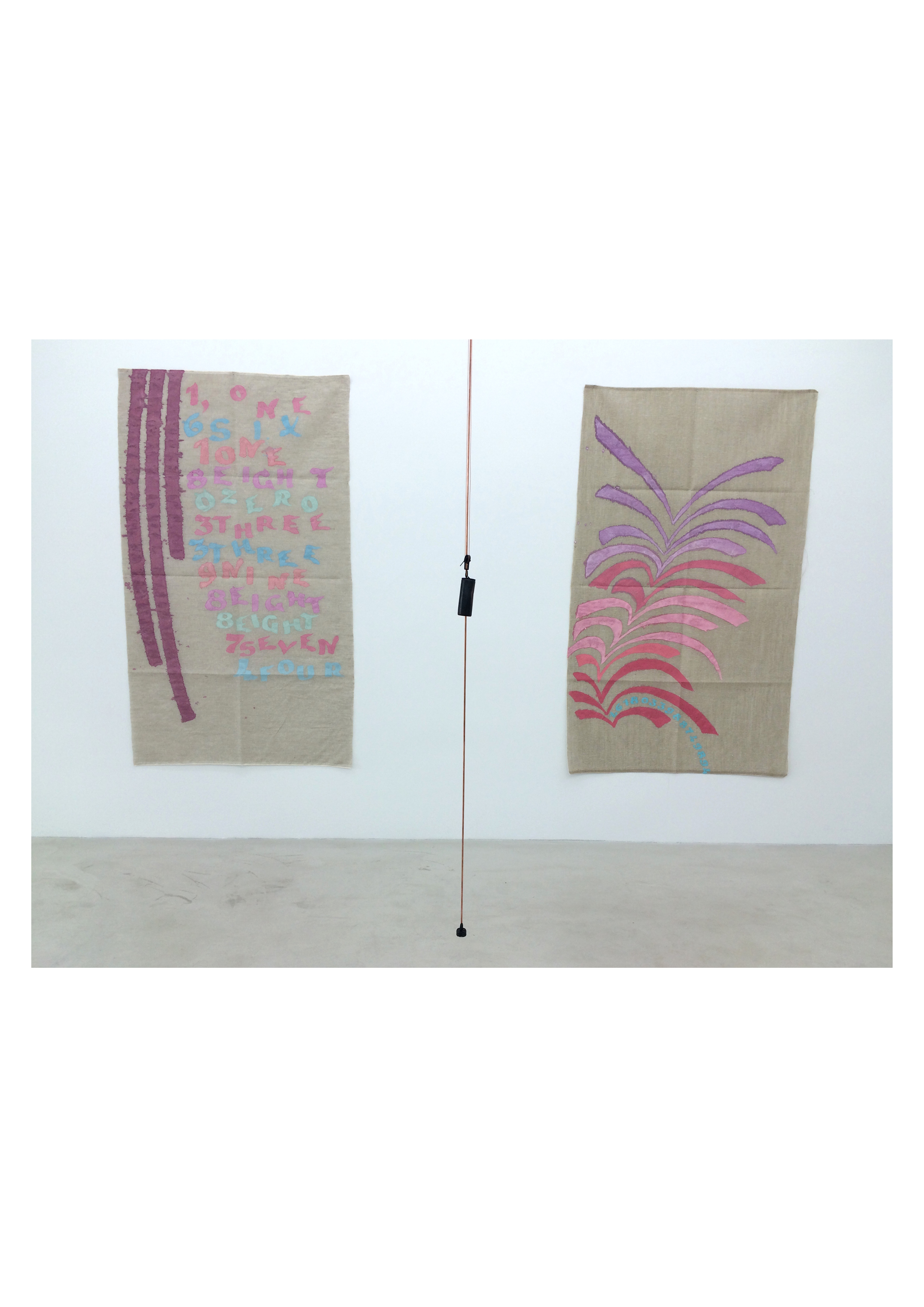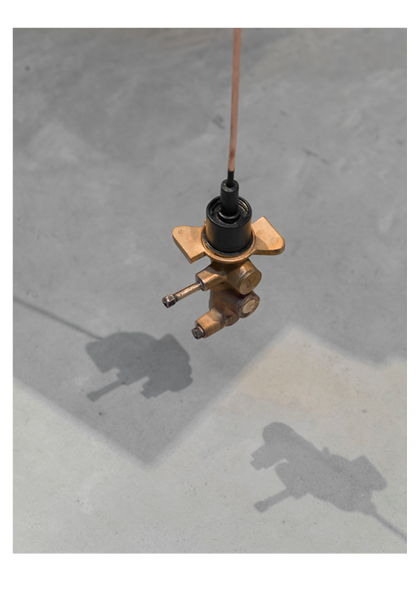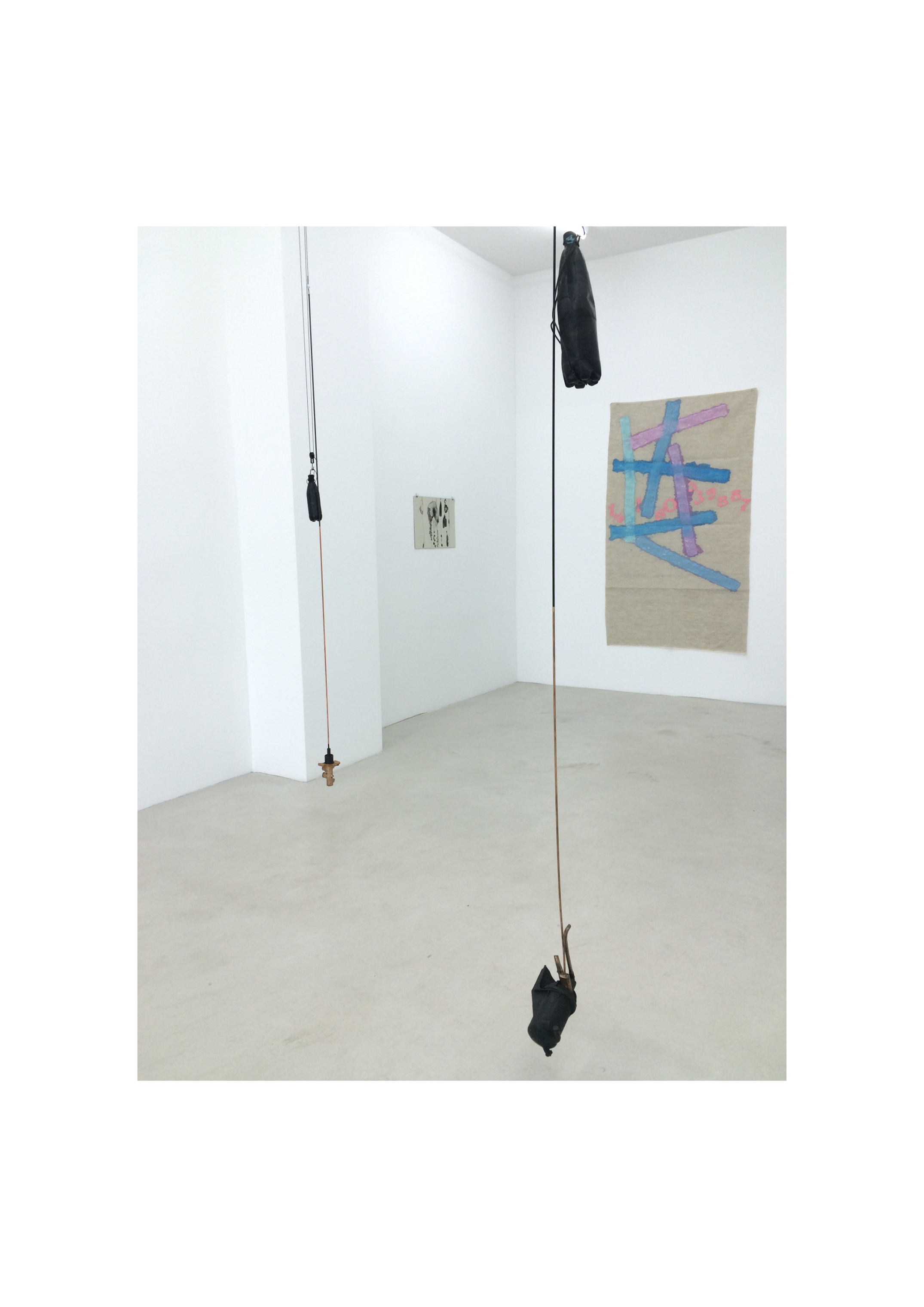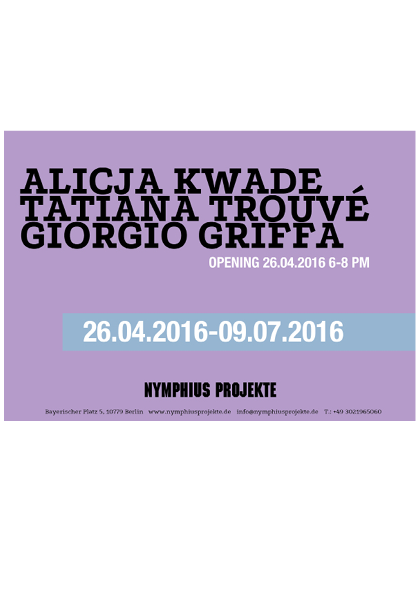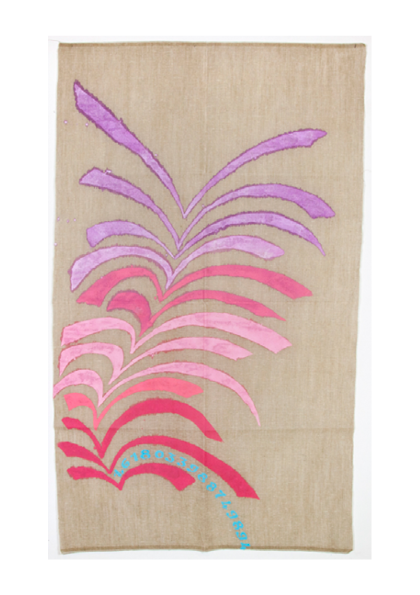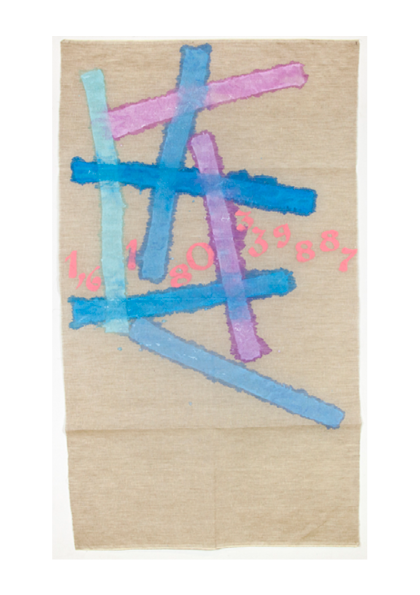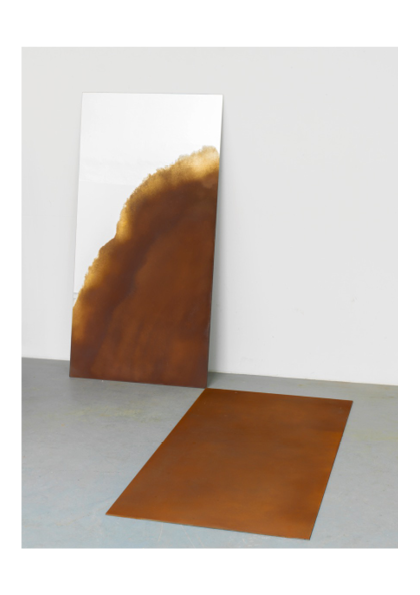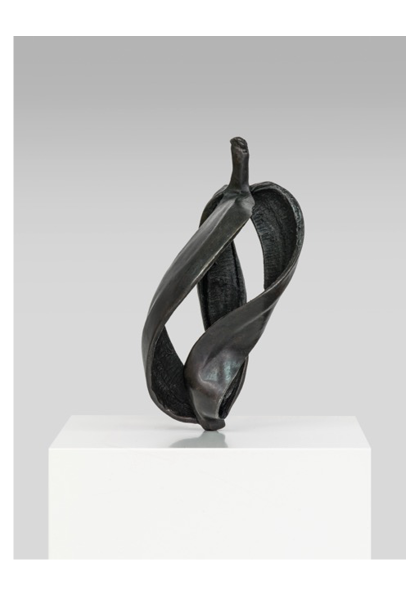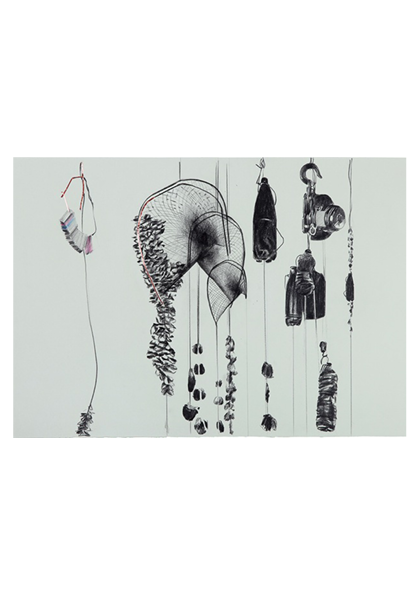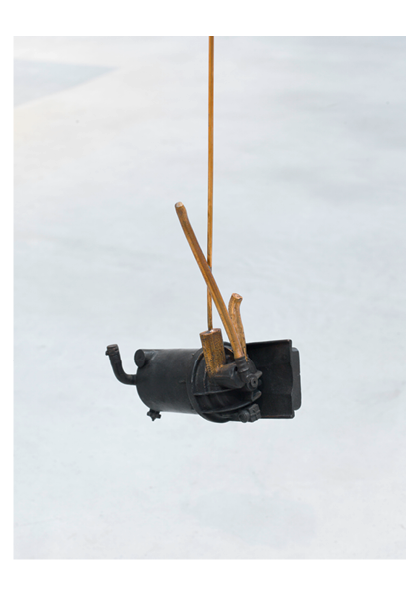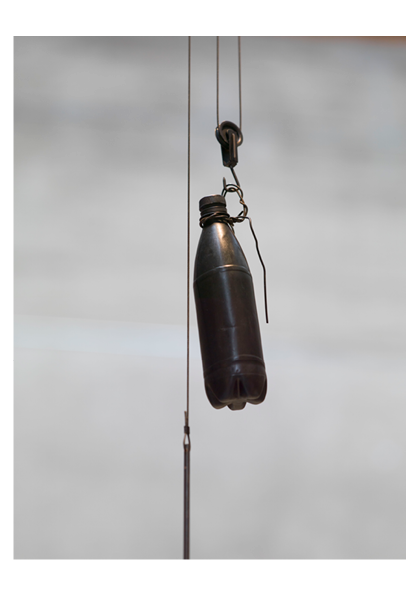Alicja Kwade / Tatiana Trouvé / Giorgio Griffa
26. April – 9. July 2016
Opening: 26.04.2016, 6-8 pm
The exhibition will combine paintings by Giorgio Griffa and sculptures by Alicja Kwade and Tatiana Trouvé in order to explore the common grounds shared by these artists coming from different generations.
Giorgio Griffa is one of the most radical Italian painters of the 1960's/70's. Connected to the movement of Analytical Painting, he retraces the conceptual reflection of art on art to a specific research on the primary elements used in painting: support, color, and sign. His paintings are mostly conceived in serial seqences like test arrangements. In these series he experiments with the mathematical systems of sezione aurea and the Fibonacci sequence conceived in ancient times by architects, scientists and philosophers in order to create harmonic proportions, that extend into cosmic dimensions.
The abstract sculptures of Alicja Kwade and Tatiana Trouvé are deeply rooted in simular minimalistic-conceptual ideas. They question the norms and models of everyday life with simple means and a nearly scientific precision. The process of artistic creation, the reflection on the employed material, on scientific as well as on metaphysical parameters are fundamental instruments within their personal artistic researches.
Alicja Kwade, Tatiana Trouvé and Giorgio Griffa represent different contexts and work with different media. Nevertheless they share an interest in materiality, repetition and formal dispossession. Their formal language is reduced to the elementary proving at the same time a strong consciousness for the presence. The three artists also share a deep interest in scientific and methaphysical questions, putting their art works into higher cosmic connections. The inner complexity of their sculpturs and paintings hides behind a formal simplicity, and questions subtely the perception of what we effectively see or perceive.
The interplay of conceptual painting placed on the wall, and abstract sculpture placed in the space will create a dialogue that finds its expression in a specific aesthetics and a strong visual impact.
